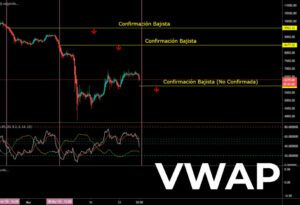
Table of Contents
ToggleIf you are new to the world of trading you may feel overwhelmed by the multitude of possibilities and functions you can perform.
For this reason today we are going to explain what is something as basic as a market order and the different types of orders that you can find.
A market order is the instruction given by a trader to sell or buy a currency immediately. Due to the volatility of the currency market, market orders are executed at the price available at the time the trade is executed.
This requires liquidity to be filled, which means that it is executed based on limit orders that were previously placed in the order book.
The drawback of this order is that you are not guaranteed the exact price at which you are going to buy or sell. This is because you have to pay the difference between the buyers’ price (bid) and the sellers’ price (ask). This situation is known as the bid/ask spread. It is usually relatively small, unless the price moves very quickly.
How to use a market order?
Market orders are useful if you are willing to pay higher prices and commissions. It can be very useful when the value of an asset is at a good price and we want to ensure its purchase or the other way around, if you are losing money quickly because your asset is falling and you want to get rid of it.
In short, if you need to enter an operation quickly or get out of it without problems, this type of order is very useful.
However, if you are still starting to trade cryptocurrencies, this market order is not very advisable, as it can be a bit more expensive than other types of orders.

Types of orders
In addition to the market order we have explained above, on cryptocurrency exchanges you can also see other types of orders. If you are just starting out, it is completely understandable that you may not know what they mean. That’s why we are going to explain you the most used order types in an exchange.
- Limit order: this type of order is quite simple and consists of indicating the amount you want to buy and the price at which you want to buy it. The order will be executed as soon as the asset reaches the limit amount you have previously set.
- Stop Loss Order: this order is somewhat more complex, as it is used to sell or buy at a price less favorable than the current one. It is used to protect against a possible drop in the price of an asset. Generally, investors place the stop loss order at the same time as they buy the shares, thus ensuring that they do not lose more than a certain amount.
- Stop Limit Order: this is a combination of a stop and a limit order. When the price reaches the stop price, the order is placed, but in this case a limit order is sent at the price that has been marked as “limit”. This avoids selling at a price that is well below the stop price. It has the same utility as the Stop Loss order, with the difference that the shares will not be sold below a certain price.
- Take Profit Order: With this order, you can automatically sell your asset when prices reach a predefined level, so you can limit profits to avoid higher risk. This order is just the inverse of the stop loss order. The stop loss order limits the loss, while the take profit order limits the profit.




